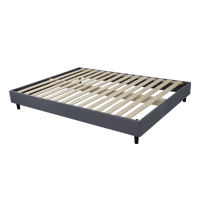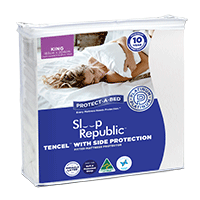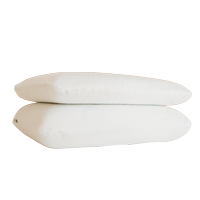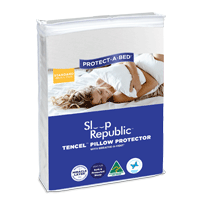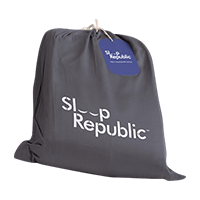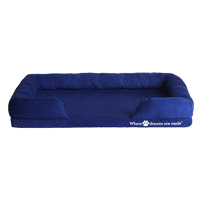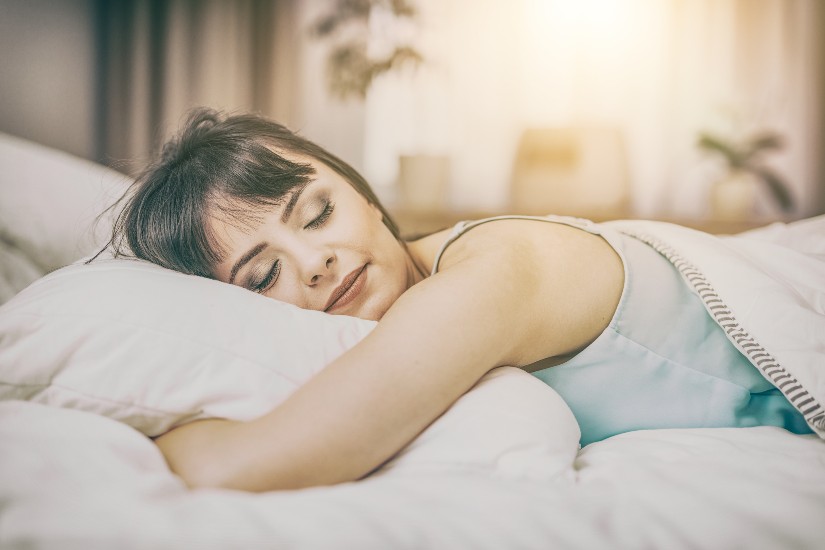Can't Sleep
White Noise: Does It Improve Sleep Quality?
Learn what white noise is and how it can finally help you get a good night’s sleep.
The domino effect of a poor night’s sleep is a pain we’ve all experienced. A poor night turns into a poor day, which turns into a poor week until exhaustion turns into a lifestyle. And the catalyst that sets off the tumbling chain reaction isn’t always within our control.
Perhaps a chronic illness is what’s stopping you from getting enough sleep or an injury. Maybe it’s your newborn wailing in the night or just the daily news. But unfortunately, you may not remember how your poor sleeping habit began.
White noise might be a useful strategy for correcting your sleep habits and improving the quality of your sleep.
WHAT IS WHITE NOISE?
White noise is a blend of all the frequencies that the human ear can hear into a single tone. Typically, that range is 20 – 20,000 hertz. Each frequency is played at the same intensity, and what you hear is the characteristic shhh. The sound is often compared to fan sounds, TV and radio static or the gentle hum of an electronic device.
Because it contains every frequency, white noise is often referred to as ‘broadband noise’. You may come across that term as you do further research into its benefits or as you shop for white noise generators.
DOES WHITE NOISE WORK?
Yes, but it’s important to understand why.
White noise works by creating a stable background noise that all other night time sounds can blend into. This effect can create a more peaceful environment for deep, restful sleep.
For those desperate for a perfect solution to their sleep deprivation, it’s worth noting that white noise is not a magic spell that instantly induces sleep. Instead, since it’s composed of all perceivable frequencies, it masks other sounds exceptionally well – that’s the key to its effect on sleep.
Whether or not white noise will work as a sleep aid for you depends on what effect you want it to have. To help you discover that answer, let’s look at its advantages and disadvantages.
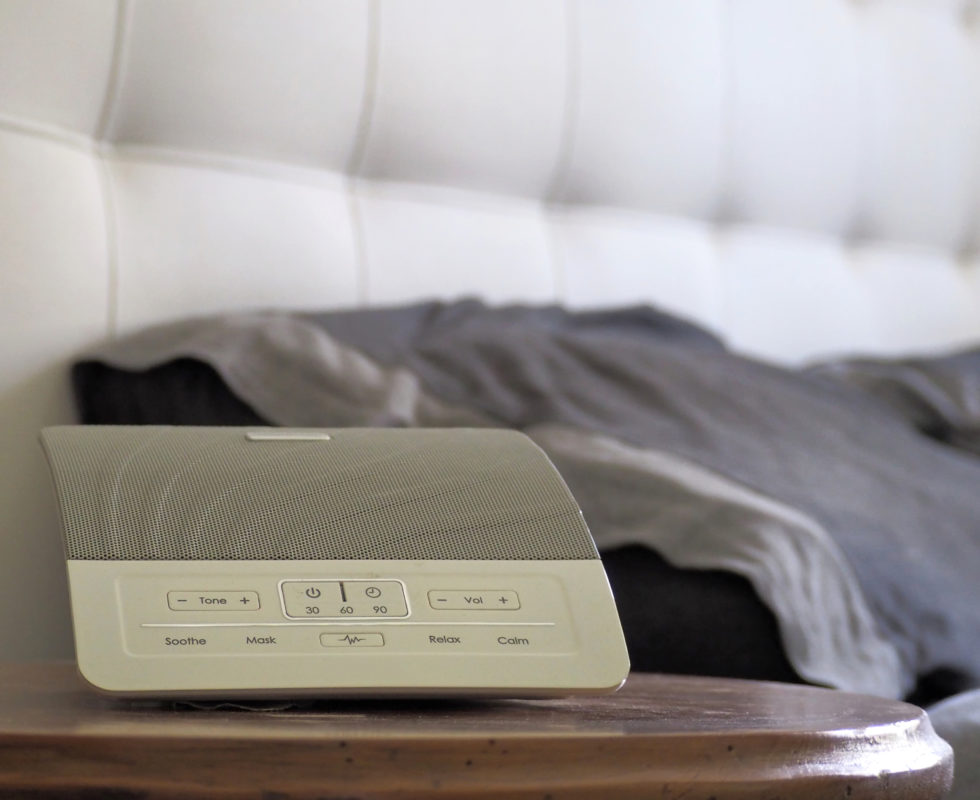
THE BENEFITS OF SLEEPING WITH WHITE NOISE
White Noise Machines Mask Other Noise
If environmental noise is interrupting your sleep, you might find white noise extremely useful.
For those living in metropolitan areas, white noise is adept at drowning out the monotonous din of pedestrians, traffic and even construction, to an extent. However, even in peaceful suburbs, the whistling wind, rustling trees and chatter of night owl housemates can frustrate light sleepers. A sound machine can drown out those irritating outside noises
White Noise Can Aid Tinnitus Sufferers
White noise can lessen the severity of tinnitus’ characteristic ringing through its masking effect. This is especially useful for sufferers trying to stay asleep.
Keep in mind that white noise is neither a cure nor a tinnitus therapy — it’s only an aid to make the condition more bearable.
White Noise Can Induce a Meditative State
Whether you practice nightly meditation or simply like to clear your head, it’s good to practice stress relief before bedtime.
The calm, steady tone of white noise can be a relaxing target for stressed, anxious and insomniac minds. Sleep ought to follow soon after.
White Noise is an Easily Accessible Aid
There’s a very low financial barrier to beginning using white noise. If you’d rather not buy a white noise sound machine (which we will discuss later), there are endless online white noise resources. YouTube and Spotify are excellent sources.
You may even be able to fall asleep to the steady hum of your air conditioner or a small portable fan or air humidifier. The ease with which one can access a source of white noise makes it an excellent aid for anyone to try for themselves immediately.
The Downsides of Sleeping With White Noise
All sounds disrupt our sleep. But, even if they’re not enough to wake us, the most minor interruptions can rouse us from the deeper levels of sleep we require into a more alert state.
The primary downside of using noise as a sleep aid is that, for some people, white noise can prevent deep sleep. However, this problem tends to occur when people use a noise source that’s too loud.
The ideal volume for white noise is under 50 decibels. That’s approximately the ambient volume of a fridge or washing machine.
As ideal as a silent room may be, it’s an impossibility for many of us. There are always ambient factors we can’t control. White noise is a tool that minimises the effects of other more disruptive noises. As long as it is used safely, it is worth trying.
How to Use White Noise For a Better Night’s Sleep
The best way to use white noise for sleep is in combination with a consistent sleep routine.
If you’re having trouble with chronic poor sleep, a white noise machine may do the trick — but it simply cannot replace healthy sleep hygiene.
We’ve got a fair bit of experience teaching people how to get a good night’s rest. So here are a few tips for developing your bedtime routine:
- Create a sleep schedule so you can go to bed and wake up at the same time each day.
- Limit light and sound disruption in your bedroom as best you can.
- Create a calming pre-sleep routine. For example, you might consider meditation, stretching or curling up with a good book.
- Avoid stimulants, both chemical and electrical, before bed. That means giving up caffeine and your phone for at least 30 minutes before bed.
- Exercise, even if it’s a light walk. Whether you get some fresh air before bed or hit the gym during the day, regular exercise improves your ability to fall into a deep sleep quickly.
There’s no shortcut better than a consistent bedtime routine. So turn these tips into habits, and give yourself the best possible chance at a deep slumber. Even if it doesn’t quite work, your new routine will only increase the effectiveness of your white noise machine.
How to Choose a White Noise Machine
One way to introduce white noise into your routine is with a white noise machine. These machines have several benefits to them.
Although the only thing a white noise machine needs to do is create a steady tone, a good device is defined by the variety of its features — even the most basic ones. So here are some key questions for you to consider.
Does it have volume control?
Arguably the most important aspect a noise machine can have is volume adjustment. As we’ve established, white noise should not exceed 50 dB, and you must be able to monitor sound levels for your health.
Does it have good sound quality?
White noise machines typically create sound digitally (by playing a recording) or mechanically (through an internal moving apparatus). Each individual has their own preference, and you’ll need to discover yours.
If you can’t listen to a particular machine’s sound in person, check its reviews to see how successful it’s been with other buyers.
Does it create a clean loop?
‘Clean loop’ refers to how the machine ends and restarts its white noise audio. You should look for a seamless loop to avoid having your sleep disrupted by audio breaks.
Does it have a sleep timer?
Repeatedly listening to prolonged noise, night after night, can cause damage — especially if it’s too loud. With a sleep timer, you can set your white noise machine to turn off after an hour or two when you’re well and truly in a deep sleep.
To find the right machine for you, make a list of all the best white noise machines on the market and look at all the features included. Then, when you know what you want out of the device, you’ll know which one is right.
FAQs About White Noise & Sleep
Does white noise help babies fall asleep?
Yes, white noise can help babies fall asleep.
As parents ourselves, we can assure you that white noise has rescued us several times. However, white noise will not be helpful for all babies and must be used very carefully to avoid damage to their sensitive ears.
Oddly enough, white noise can aid babies by both masking sound and preventing silence.
Some babies demand quiet while they sleep, which may be impossible during daytime naps, especially if you have older children running around; the soft static will silence those sounds. Other babies are soothed by the presence of others and can’t sleep in silence; white noise gives them something non-disruptive to help them fall asleep.
But children, especially toddlers, have extremely sensitive ears that are still developing. Therefore, care must be taken with the volume and distance of the white noise to avoid hurting them.
A study by the American Academy of Pediatrics found that improperly used sound machines could harm developing toddler and baby ears. Based on those findings, here are some recommendations:
For babies, never use your white noise machine at maximum volume, and always keep it at least 2m away from the sleeping child.
Does white noise help adults sleep?
Yes, white noise can help adults get to fall asleep faster.
A 2017 sleep induction study found that white noise could reduce the amount of time it takes to fall asleep by 38% compared to ambient background noise. That is a significant difference. The study’s conclusion suggested white noise machines could be a helpful aid, especially for insomniacs in need of help falling asleep.
Are machines better than white noise apps?
The primary advantage white noise apps have over machines is their portability.
With endless white noise apps available for smartphones, you can block out the world for a quick nap whenever you need it. Block out the world and enjoy a nap on the train commute, or lie down on the couch for 20 minutes after lunch.
Another benefit apps have (over some, but not all, machines) is that many can offer additional calming sounds. Nature sounds are a popular alternative, with crashing waves and rain sounds offering the same effect as white noise.
But smartphone audio may not be the best way to get a good night’s rest. First, the audio quality isn’t as good as a dedicated machine. If your app doesn’t feature a timer, you’ll expose yourself to continuous noise even after falling asleep. By keeping your mind alert, that sound can prevent you from entering deep, sound sleep.
If White Noise Doesn’t Work For You, Try These Alternatives
White noise isn’t a one-size-fits-all solution. Fortunately for those seeking sound therapies for better sleep, there are other options. Let’s look at some different noise colours, specifically pink noise and brown noise.
Using Pink Noise for Sleep
Pink noise is also a broadband noise in which the lower frequencies are loudest, with the amplitude tapering down as the frequencies increase.
Listening to pink noise is like listening to the deep patter of steady rain or the thrum of a heartbeat. Pink noise has a much deeper sound compared to white noise.
Studies have found that listening to pink noise in bed leads to a “significant enhancement in the percentage of stable sleep time” compared to those who slept in silence.
Using Brown Noise for Sleep
This is also referred to as red noise, though both names refer to the same effect; the ‘red’ title places it on the colour noise spectrum, while the ‘Brown’ title references the scientist Robert Brown.
In Brown noise, the lower frequencies are given more power than the higher ones — however, the higher frequencies are cut off at a specific limit.
Brown noise can sound similar to the rush of a heavy waterfall or rolling rumbling thunder.
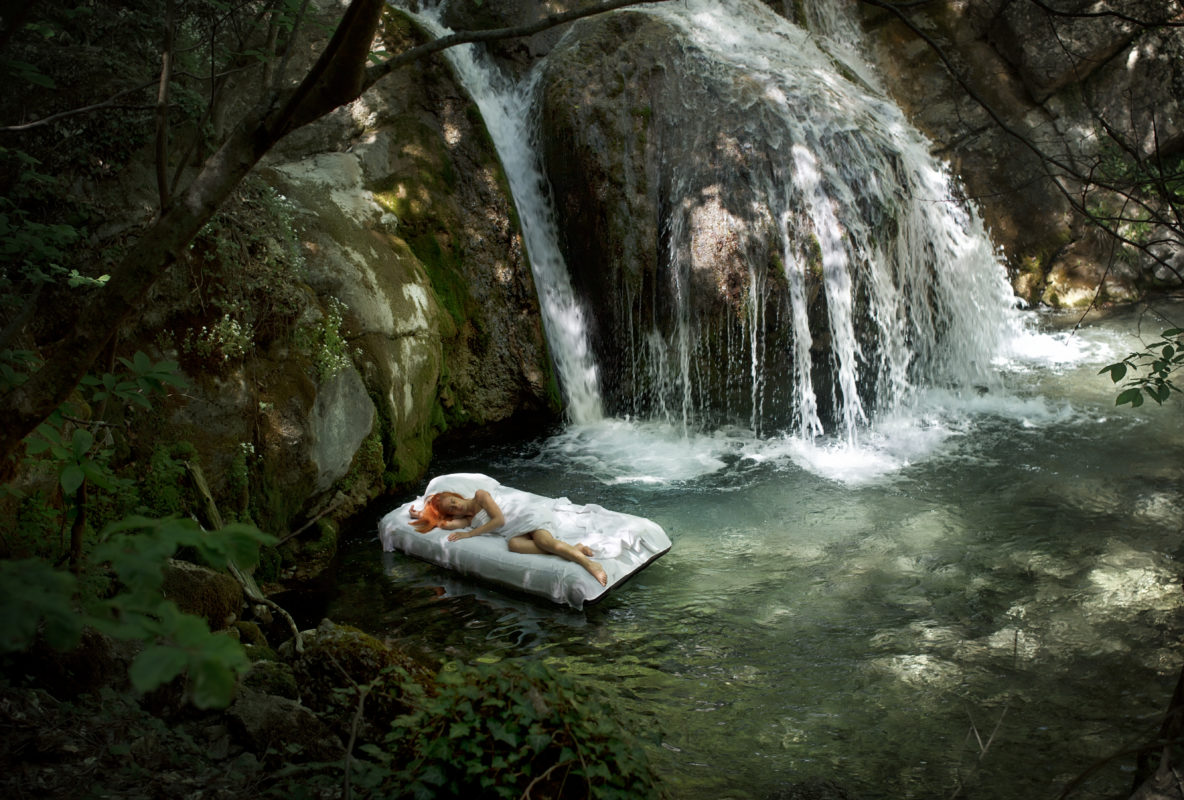
While there’s not as much research on the sleep-inducing qualities of brown noise, there is anecdotal evidence suggesting that it is effective. It has also developed a reputation for inducing focus, making it a possible solution for restless minds struggling to sleep.
Hopefully, you are well on your way to establishing a consistent sleep routine, with the added help of a white noise machine to lull you off. But if that’s still not enough, nothing leads to better sleep quite like the right mattress. Have you considered the Sleep Republic hybrid mattress?

